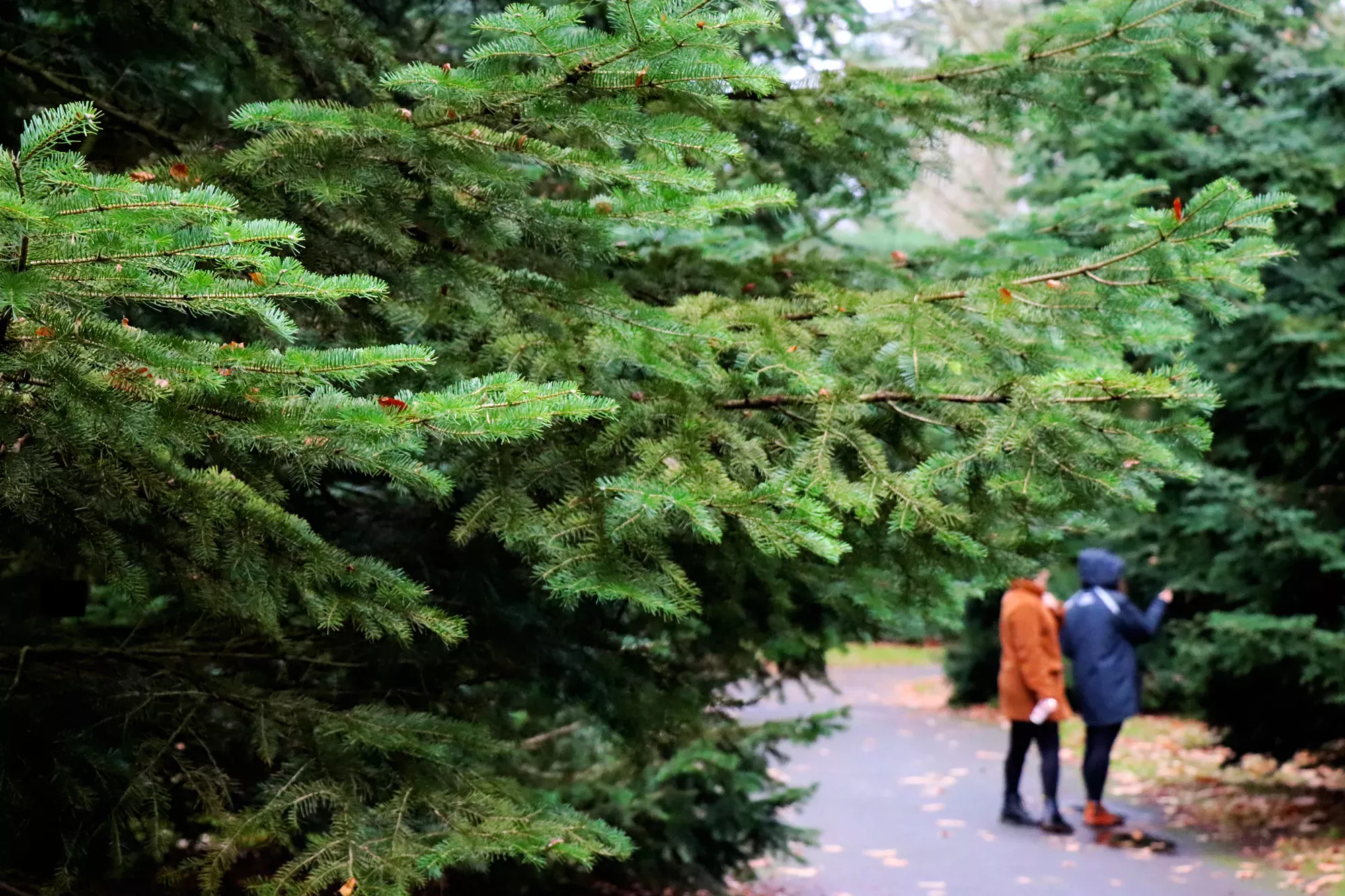31 October 2022
4 min read
7 magical Christmas tree facts
There's more to these festive favourites than meets the eye.

We are getting ready to light our incredible living Christmas tree for Wakehurst's Glow Wild 2024. Millions of us will be putting up trees in our homes this winter, but how much do we really know about this Christmas tradition?

1. What species are Christmas trees?
There are many different species of Christmas trees. They are usually evergreen conifers, such as spruce, fir and pines.
Although Christmas trees in the shops all look very similar, there are many different species of conifers amongst the mass of green.
Some of the most popular are the Norway spruce (Picea abies), nordmann fir (Abies nordmanniana), blue spruce (Picea pungens) and fraser fir (Abies fraseri).
Different species of tree have different characteristics. Some, like the fraser fir, are known for their stronger scents. The nordmann fir, which is one of the UK's most popular trees, has a gentler scent and holds onto its needles (a good one to pick if you dislike hoovering).
Wakehurst's magical, living Christmas tree is a giant redwood (Sequoiadendron giganteum).

2. When did people start decorating Christmas trees?
Sparkling Christmas trees covered in tinsel are one of the classic images of Christmas.
But the tradition of decorating trees only came to the UK relatively recently, in the 1800s. It originally arrived from Germany, and was made popular in Victorian times by Queen Victoria and her husband Albert.
Back then, the trees on sale were smaller so people would put them on tables. Norway soon started to export larger trees, so people could place them on the floor with space for presents underneath.
Our living Christmas tree at Wakehurst is one of the tallest in the UK and is lit with over 1,800 energy-saving bulbs for Glow Wild 2024.

3. What are traditional Christmas tree decorations?
Tree decorations used to be very different from the familiar baubles and tinsel we use today. In fact, nuts and candles were originally the Christmas decoration of choice.
Whilst the UK adopted tree decorating during the Victorian times, the actual tradition itself is thought to have originated in 16th century Germany, where nuts, berries, apples and candles were used to decorate small evergreens. They used tinsel made of shredded silver to give that extra sparkle.
You can choose from our selection of beautiful Christmas decorations by visiting Wakehurst's shop as part of Glow Wild 2024 or by browsing our online shop.

4. Where are the UK's tallest, living Christmas trees?
One of the tallest living Christmas trees in the UK grows at Wakehurst, our wild botanic garden in Sussex. Decorated with 1,800 energy-saving Christmas lights, it's a stunning part of our winter lantern trail Glow Wild.
Decorating a tree this large takes a bit longer than the Christmas tree in your home. It needs 12 hours, five staff members and two cherry pickers to transform this tree into a Christmas icon.
5. How tall do Christmas trees grow in the wild?
In the wild, some of the species that we use as Christmas trees can grow to be giants and live for many years.
Douglas firs can grow up to 55 metres, whilst nordmann firs and Norway spruce can reach a mighty 60 metres.
Originally from Scandinavia, the Norway spruce is a tough cookie. Completely frost hardy, it has thick bark to protect it from the cold, thin waxy needles to prevent water loss, and pine cones protect the seeds during harsh weather.
The Norway spruce is the typical tree gifted by the Norwegians to Trafalgar Square for their iconic display every year. This has been a tradition since 1947, as a way of saying thank you for support in the Second World War.
6. Which species of Christmas tree is native to the UK?
A less common tree grown commercially for Christmas is the scots pine (Pinus sylvestris).
They're the only pine tree native to Britain, they can grow up to 35 metres and live for up to 700 years. Look out for their red scaly bark and brown pine cones.
In the wild, this species loves to grow in heathland and many of them grow in the Scottish highlands, where they support rare species such as red squirrels and pine martens.


7. Where can I see living Christmas trees in the UK?
Experience one of the tallest living Christmas trees in the UK, along with over 1,500 handmade lanterns and light installations, in Wakehurst's Glow Wild 2024.
To see a range of trees traditionally used in homes at Christmas, visit Kew's stunning Pinetum. You can see Norway spruce, nordmann firs and blue spruce in this area of Kew Gardens.
To find one of Kew Gardens' hidden gems, head to the Arboretum to the south of the Gardens. Spanning 40 acres, it's home to an incredibly diverse collection of conifer trees. This species of tree has existed for over 300 million years, and the fossilised remains of ancient conifers have helped scientists trace the geological history of the Earth.





